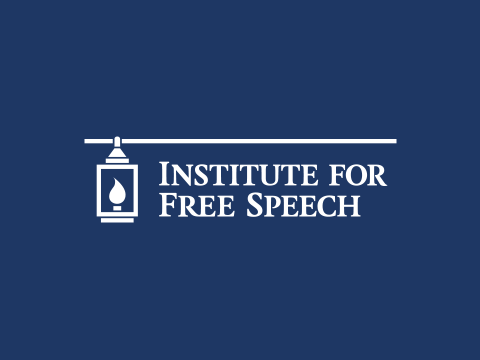If you are a regular reader of The New York Times, you are probably convinced that the greatest threat facing our democracy today is so-called “dark money.” Articles like Nicholas Confessore’s on October 10th titled, “Secret Money Fueling a Flood of Political Ads,” bemoan the “dark money” threat, warning readers that “[m]ore than half of the general election advertising aired by outside groups … has come from organizations that disclose little or nothing about their donors.” The New York Times further pegs this percentage at 55%.
This claim has the distinct honor of being both misleading and wrong.
Let’s take a step back and imagine all of the ways that one could speak out by donating money in our current political system. You could donate to a candidate directly. You could donate to a political action committee. You could donate to a political party, or one of its many affiliated groups. You could donate to a specific type of committee that only makes independent expenditures (a Super PAC). You could donate to an advocacy nonprofit, like Americans for Prosperity, the League of Conservation Voters, or the National Rifle Association, which are organized under Section 501(c)(4) of the tax code and may only have political activity as less than half of their overall mission in order to maintain their tax status. Or you could donate to a 501(c)(6) trade association, like the U.S. Chamber of Commerce, which, like 501(c)(4)s, engage in the political process as a smaller part of their overall mission.
Each one of these potential avenues for political participation comes with different restrictions from the IRS and FEC regarding how much can be contributed, how much information has to be disclosed about donors, and whether coordination with a candidate can occur. Of these groups, only 501(c)(4) and 501(c)(6) organizations do not disclose the names, addresses, and employers of their donors to the FEC (unless a contributor earmarks their donation for a political purpose, in which case, the name of the donor and amount of the donation is disclosed, but I digress). These groups represent the supposed “dark money” threat.
So, if one wanted to know how much money was spent on ads by organizations that don’t disclose their donors (i.e. “dark money”), you would look at the total spending of 501(c)(4) and 501(c)(6) groups and compare it to overall political spending – the sum of spending by candidates, committees, political parties, Super PACs, and “dark money” groups. Right? After all, the amount of influence a “dark money” ad can have is relative to all of the other political ads out there.
Apparently, this isn’t the case if you work for the New York Times. No, Mr. Confessore’s article only compares ads run by “outside groups” – ignoring all spending by candidates, political action committees, and political parties (the primary sources of election spending). In doing so, The New York Times’ analysis compares only Super PAC spending vs. 501(c)(4) and 501(c)(6) spending. This is a particularly odd comparison, especially since as recently as this February, spending by Super PACs was, again according to The New York Times, “a form of legalized bribery.”
Comparing money from organizations that don’t disclose their donors to all campaign spending on political ads leads to far less sensational results. According to the Center for Responsive Politics’ (CRP) collation of FEC data, $106.5 million in “dark money” has been spent on advertisements this election cycle to date ($84.5 million by “Conservative” nonprofit groups, $21.2 million by “Liberal” nonprofit groups, and $815,000 by “Other” nonprofit groups). Compared to $1.83 billion in total spending to date ($805.4 million by all candidates for House and Senate, $588.3 million by the Democratic and Republican Parties’ national committees, $333.9 million in independent spending by non-party committees, and $101.5 million by federally-focused 527s), non-disclosed ads make up a paltry 5.8% of overall spending. For comparison’s sake, money spent only by candidates and political parties accounts for $1.4 billion, or 76.5%, of total spending.
But even with the New York Times’ highly unusual metric that purportedly shows a flood of “dark money,” the Times still manages to overstate its role. Remember groups that don’t disclose their donors have spent $106.5 million to date. Expenditures by all independent groups total $453 million to date ($241.1 million by “Conservative” groups, $201.1 million by “Liberal” groups, and $10.8 million by “Other” groups). So, this scary “dark money” accounts for only 23.5% of spending by “outside groups.”
How the New York Times arrives at the conclusion that 55% of outside ads come from sources that don’t disclose their donors is a mystery, since they do not reveal their methodology. Perhaps, they are counting individual ads and not the money used to pay for the ads. If so, this is an odd approach. Measuring the impact of “dark money” presumably is meant to measure the number of voters who saw a particular ad, and more expensive ads are more expensive precisely because they reach more voters.
Or perhaps the Times used this flawed Brennan Center report (referenced elsewhere in the article) as a cheat sheet. That report, which looks not at all election spending, but only spending in nine U.S. Senate races through September 30, seemingly makes at least one serious methodological error. Without a clearer statement of the report’s methodology, it seems to count donations that came from organizations that disclose their donors as “dark money.” A classic example mentioned in the Brennan Center study is American Crossroads (a fully disclosing Super PAC) and Crossroads GPS (a non-disclosing 501(c)(4) advocacy nonprofit). These two related organizations are organized differently, and, therefore, are regulated differently. The Brennan Center analysis forgoes this distinction and assumes that all spending by American Crossroads and Crossroads GPS should be considered “dark.” The result is that fully disclosed money is counted as fully undisclosed. For example, according to the FEC’s website, American Crossroads, spent $1.88 million in support of North Carolina Senate candidate Thom Tillis – including $250 it received on August 31 from John Leigh of Hendersonville, NC.
That $250 contribution is supposedly secret, corrupting “dark money.” That is patently ridiculous.
Whatever the case may be, The New York Times clearly does not like “money in politics.” After all, The New York Times’ influence is severely deteriorated when voters are hearing other voices than those officially sanctioned by the Gray Lady. But this political view does not give the paper license to wantonly misrepresent the actual state of political spending in the 2014 election cycle. Its readers deserve better.












